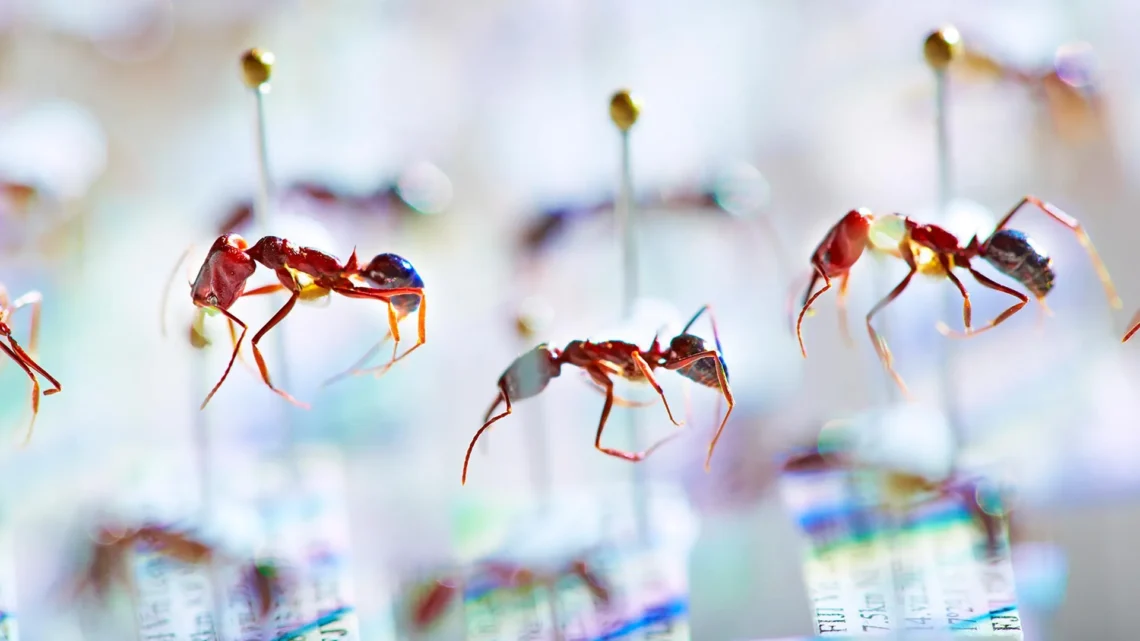Insects are vital for our ecosystems—they pollinate flowers, aid in decomposition, and support nutrient cycles. Yet, recent research indicates that insect populations are declining, raising concerns about their survival in our modern world. Understanding whether these declines are part of a longer trend can help guide global conservation efforts and uncover the reasons behind what’s being called the “Insect Apocalypse.”
In a groundbreaking study published in Science, researchers from the Okinawa Institute of Science and Technology (OIST) investigated ant populations in the Fijian archipelago to gain insights into biodiversity trends. By analyzing the genomes of ant specimens collected over the years from museums, they tracked the evolutionary relationships of these ants, revealing when they arrived on the islands and uncovering their population histories.
Conservation efforts often emphasize monitoring larger, more charismatic animals in easily accessible habitats, but many insect species are rapidly declining, particularly on islands known for their rich biodiversity. Dr. Evan Economo, a professor at OIST and the University of Maryland, explains, “It’s challenging to estimate historical changes in insect populations since we haven’t systematically monitored them. We adopted a novel method by examining the genomes of numerous species from museum specimens. These genomes provide clues about population changes, letting us map out community-wide shifts.”
What they found is concerning: 79% of the endemic ant species in Fiji are in decline, a trend that corresponds with human arrival on the islands. In contrast, ant species introduced by humans are thriving. The most significant population declines appear to have occurred in the past few hundred years, coinciding with European contact, colonization, global trade, and modern agricultural practices.
A community-wide approach
By examining the Fijian archipelago, the researchers gained a comprehensive overview of ant population changes and colonization history. Dr. Cong Liu, the paper’s lead author, notes, “Islands, being isolated ecosystems, tend to show the effects of human impact more quickly, making them early warning signs.”
However, studying tropical island populations presents obstacles. Fieldwork can be extremely challenging, making continuous surveys difficult. As a result, the researchers relied on extensive museum collections assembled over decades, including both their previous efforts and those of other entomologists.
Museumomics: reconstructing ant colonization
One challenge of utilizing museum specimens is the degradation of DNA over time. To solve this, the team employed special sequencing techniques (termed museumomics) to analyze tiny DNA fragments. They sequenced genomes from thousands of ants across over a hundred confirmed species, identifying 65 instances of new ant species arriving on the islands, ranging from natural colonization millions of years ago to recent human introductions connected to global trade.
Using population genetics models, the researchers mapped the rise and fall of various ant groups, highlighting the decline of endemic species alongside dramatic increases of non-native species in recent years.
Island endemic species often evolve traits that make them vulnerable to environmental changes, such as the introduction of harmful species. Dr. Liu adds, “Historically, most recorded extinctions have come from island systems.”
Going beyond the archipelago
The researchers hope their findings will inspire more studies on insect populations and inform conservation strategies. Professor Alexander Mikheyev from the Australian National University, a senior author of the study, emphasizes the significance of biodiversity and museum collections: “With our growing scientific tools, we can extract more valuable information from these collections. It’s crucial that we continue to invest in and maintain them.”
Locally, the team is also studying Okinawa’s insect populations in real-time through methods like acoustic monitoring and trapping as part of the Okinawa Environmental Observation Network (OKEON).
“Insects are indispensable for our environment,” Prof. Economo states. “As scientists, it’s our responsibility to protect them and provide the necessary data to ensure the long-term health of our ecosystems.”
Summary: Insects play a crucial role in ecosystems, yet recent studies reveal alarming population declines, especially among endemic species in Fiji. Researchers used genomic analysis of museum specimens to track these changes and found that 79% of local ant species are declining, particularly since human arrival. The study underscores the need for continued monitoring and conservation efforts, emphasizing the importance of biodiversity and museum collections in safeguarding our ecosystems.





